If you’re someone who worships Guanyin or simply fascinated by divine feminine energy, gather around—because today, we’re diving deep into one of her most cherished manifestations: Guanyin in the Child-Giving Form, a figure especially adored by women hoping to welcome a child into their lives.
Let’s start with a little-known truth: Guanyin, the compassionate goddess worshipped across Asia, wasn’t always portrayed as a woman. In fact, she began as Avalokiteśvara, a male Bodhisattva in Indian Mahayana Buddhism. But as the teachings spread to China, her form gradually shifted to the nurturing female figure we know today—thanks to Taoist influence, local legends, and cultural storytelling.
It’s this feminine version—“Guanyin Nia”, or “Goddess Guanyin”—that became the go-to divine protector for hairstylists, makeup artists, and opera performers. You’ll often find her statue standing gracefully in beauty salons and backstage dressing rooms. For many, she’s not just a religious figure—she’s a symbol of care, creativity, and divine femininity.
But among her many forms—84, according to Buddhist scriptures—the Child-Giving Guanyin holds a special place in people’s hearts.
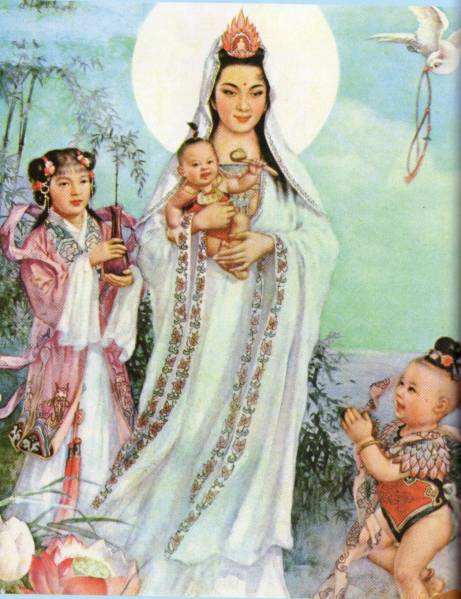
A Divine Midwife’s Tale
One legend tells of Avalokiteśvara sitting peacefully in meditation until a distant cry breaks the silence. A woman is in labor, alone in a forest cottage. With no midwife around, both mother and child are in danger. Moved by compassion, the Bodhisattva transforms into an elderly woman—a midwife—and safely delivers the baby. But afterward, the blood from childbirth stains her form, and she can never return to her male appearance. Thus, she remains forever female—a divine protector of women and mothers.
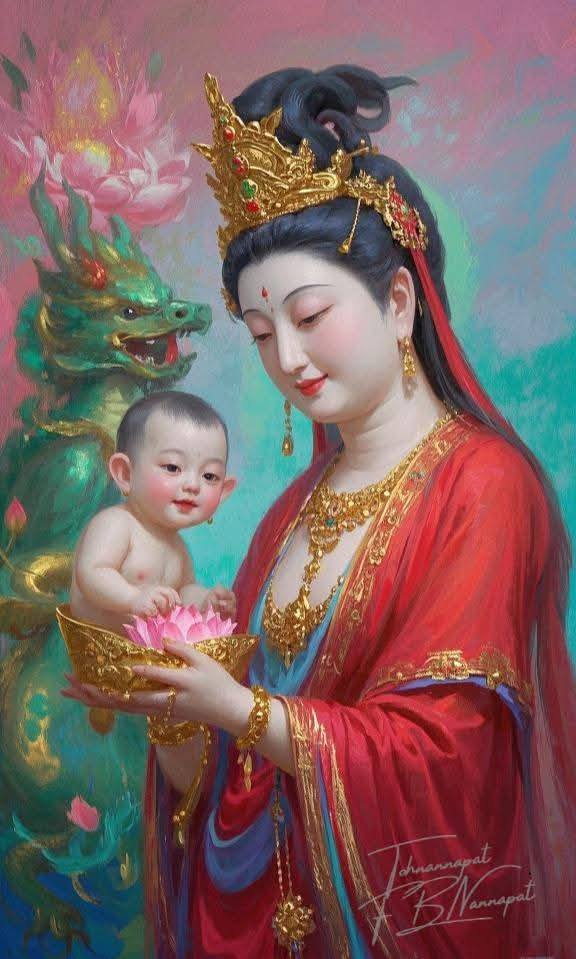
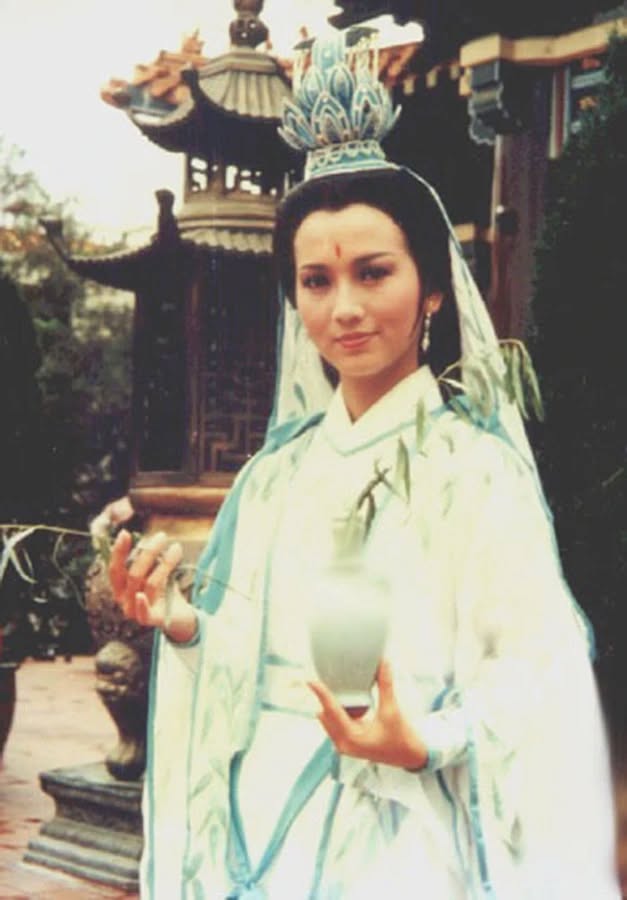
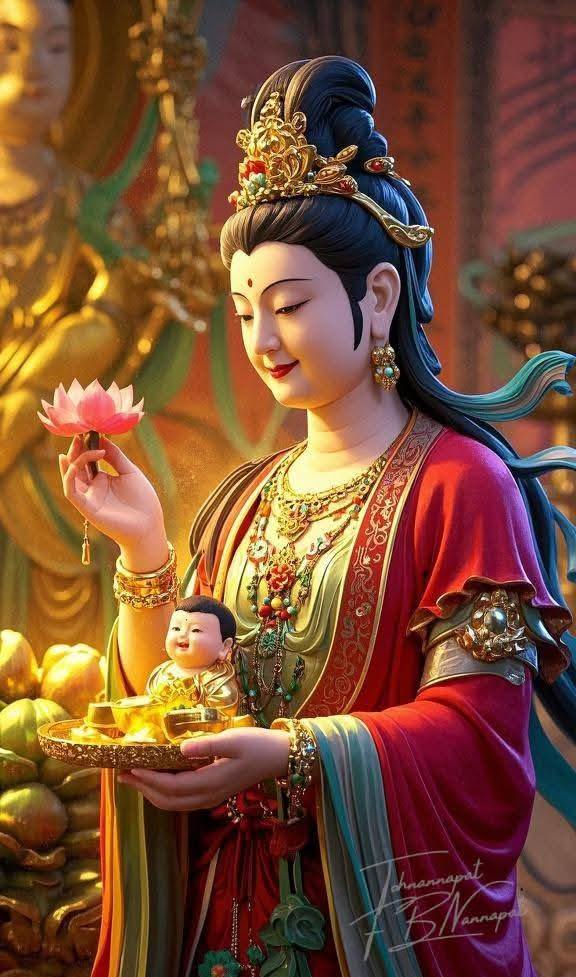
The Day Guanyin Listened
Another story goes like this: Curious to know what women pray for at her temple, the Bodhisattva (still in male form at this point) spiritually enters a Guanyin statue to eavesdrop on their wishes. One woman, dressed in fine silk, tearfully prays for a child to continue her family line. Another, living alone while her husband works abroad, longs for a baby to ease her loneliness. One by one, women come in with heartfelt prayers, each hoping for a child to complete their family.
Hearing their pleas, the Bodhisattva emerges from the statue and, in his true male form, offers a blessing: “I will give you what your hearts desire.” But the women, seeing a man step out of a female statue, scream and run in fear.
Realizing that a male form only creates distance, he chooses from then on to appear as a woman when helping mothers-to-be. And thus, the Child-Giving Guanyin—gentle, nurturing, and ever-compassionate—was born.
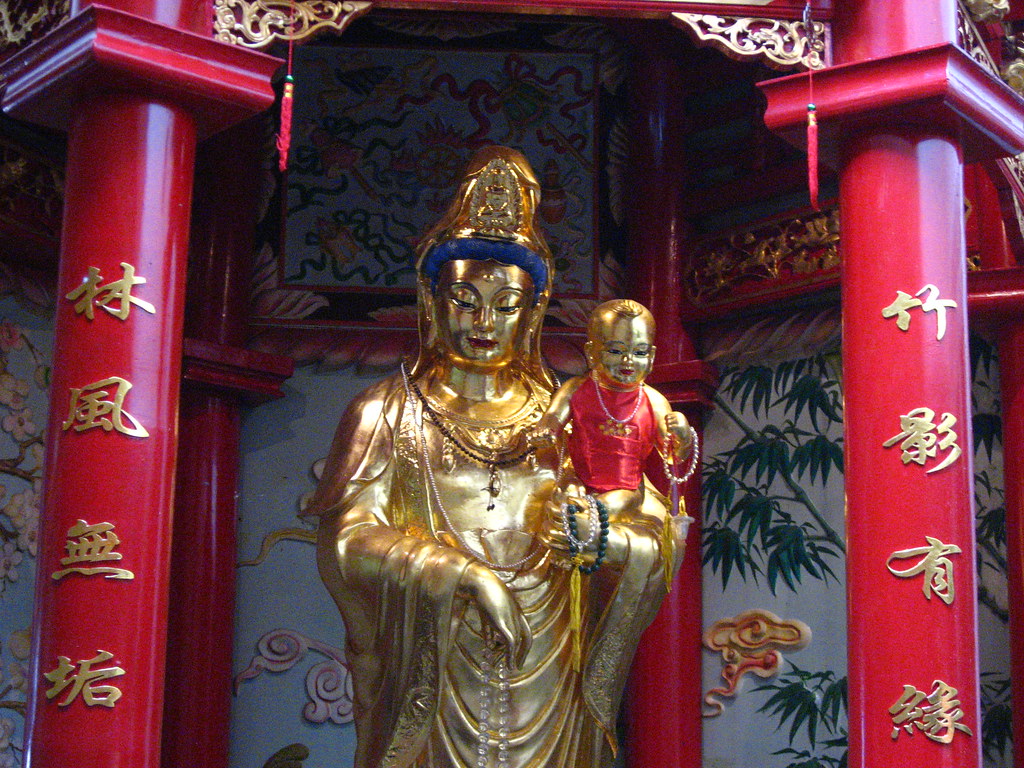
Protector of the Innocent
In yet another tale, Guanyin saves 100 children from a dark sorcerer who needed their hearts to make an immortality potion. After rescuing them, she brings the children to the city governor and helps find loving homes—especially for families who could not conceive.
From Myth to Masterpiece
The legend of Princess Miaoshan, considered the earthly incarnation of Guanyin, is beautifully told in The Vision of Kwannon Sama (1929), translated into Thai by Phraya Anuman Rajadhon. It tells of a royal daughter who sacrifices her body to save her father’s soul, eventually achieving divine enlightenment. Her story has inspired both classic films and TV dramas—including Shaw Brothers’ The Goddess of Mercy (1967) and TVB’s The Reincarnated Princess (1985).
Though the Miaoshan tale isn’t found in official sutras, it has shaped how generations envision Guanyin—not as distant or abstract, but as someone real, relatable, and incredibly human.
So next time you see a statue of Guanyin gently cradling a child, remember—it’s more than just an image. It’s a symbol of hope, compassion, and the deeply personal stories of women everywhere who turn to her in their most vulnerable moments.
Stay tuned, because there are many more Guanyin tales to come.
Story: Nai Mu Image: Internet








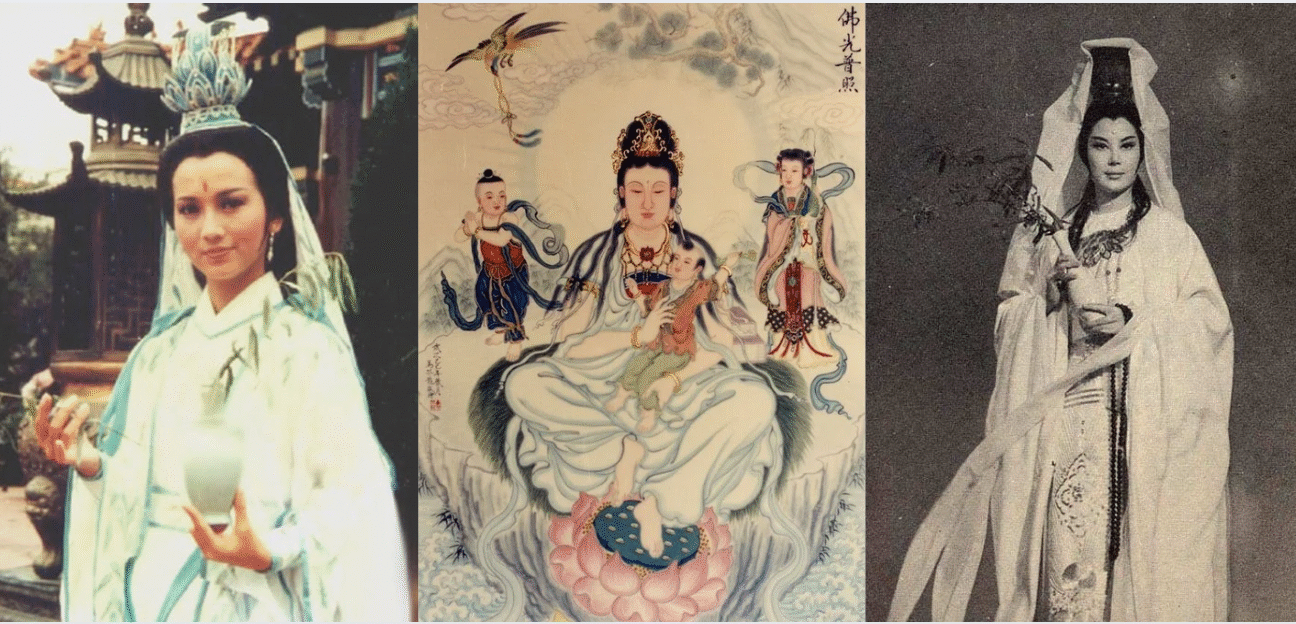






Leave feedback about this